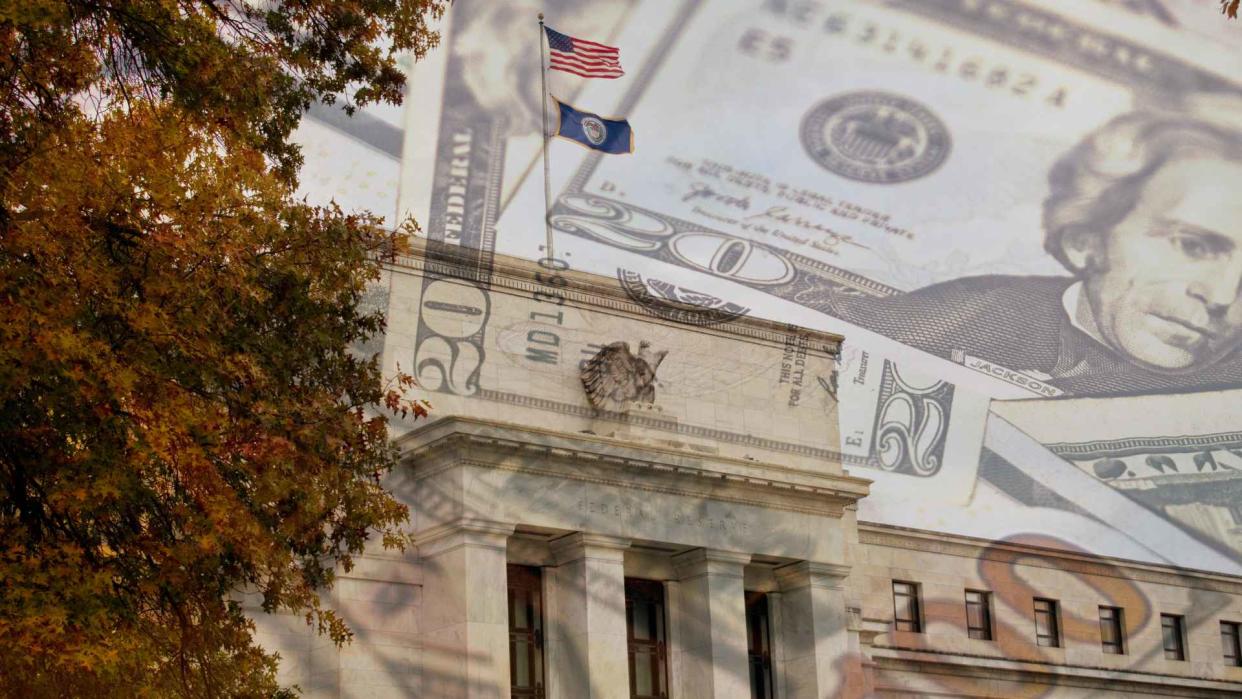The Federal Reserve Won’t Budge on High Interest Rates: How To Turn This Unfavorable Decision to Your Benefit

The Federal Open Market Committee meeting on May 1, 2024, represents another opportunity for the U.S. Federal Reserve to lower interest rates. However, that move doesn’t seem likely, according to experts.
Check Out: How Can You Withdraw Money From a Bank Account? 3 Ways To Know
Read Next: 7 Unusual Ways To Make Extra Money (That Actually Work)
While Americans struggle with record-high credit card debt and high interest rates keep many prospective homebuyers out of the house of their dreams, there is a silver lining to higher interest rates. Since rates aren’t likely to drop until mid-summer, according to experts, it pays to look on the bright side and leverage these interest rates to your favor.
Save Money Faster
With high-yield savings accounts and CDs both offering 5% or higher returns, it’s a good time to build that emergency savings or start saving for a big purchase. By the time you’ve accrued enough money for a down payment, home prices and interest rates may have dropped, allowing you to make that move.
Lower Housing Prices
Low housing stock continues to keep prices in the residential real estate market elevated. But U.S. home prices declined for the third month in a row in January 2024, indicating that high mortgage costs are doing their job to reduce home prices.
The market still has a way to go before most buyers would consider houses “affordable,” but it’s a start. “If the 2020-2021 housing market was too hot, then the 2023 market was probably too cold, but 2024 won’t yet be just right,” said Mark Fleming, Chief economist at First American Financial Corporation, in a forecast reported by Forbes Advisor.
Controlled Inflation
The Fed began raising interest rates to stem post-pandemic inflation sparked by stimulus checks, supply-chain issues, and consumer revenge spending. Inflation rose by 3.5% in March, according to the Consumer Price Index report, up from a 3.2% year-over-year increase in February.
The Fed is aiming for a 2% inflation rate and is unlikely to reduce the prime interest rate until inflation slows further. Higher interest rates help stabilize prices, which keeps goods and services (slightly) more affordable for Americans.
Increased Investment Opportunities
In theory, high interest rates lead to smaller stock market gains. This hasn’t been the case with Wall Street’s recent bull run. However, it’s important to look at what’s driving the stock market, with top tech stocks making up the lion’s share of total returns.
For a more stable investment in a rising interest rate environment, experts say you might want to consider U.S. Treasury bonds. The yield for 10-year U.S. Treasury bonds jumped to 4.5% in April 2024, after starting the year below 4%, U.S. Bank reported.
“Economic growth remains solid, which might indicate interest rates need to remain elevated for some time,” Rob Haworth, senior investment strategy director for U.S. Bank Wealth Management said in an article on the U.S. Bank website. “The most recent data indicates inflation may linger higher for longer, and we’re also seeing foreign buyers stepping back from the U.S. market. Both factors contribute to keeping bond yields higher as well.”
Increased Economic Stability
By keeping interest rates high, the U.S. Federal Reserve seeks to encourage a “soft landing” for the economy. If inflation slows too rapidly – or even turns into deflation – the U.S. could see a recession, job losses, and increased economic struggles.
Bottom Line
Learn More: Check Your $2 Bills — They Could Be Worth a Ton
It’s important to remember that, while high interest rates may seem frustrating if you’re trying to secure a mortgage, finance a car or pay down credit card debt, the decisions at the FOMC seek to create a stable economy.
More From GOBankingRates
How Much Does the Average Middle-Class Person Have in Savings?
5 Reasons You Should Consider an Annuity For Your Retirement Savings
This article originally appeared on GOBankingRates.com: The Federal Reserve Won’t Budge on High Interest Rates: How To Turn This Unfavorable Decision to Your Benefit
